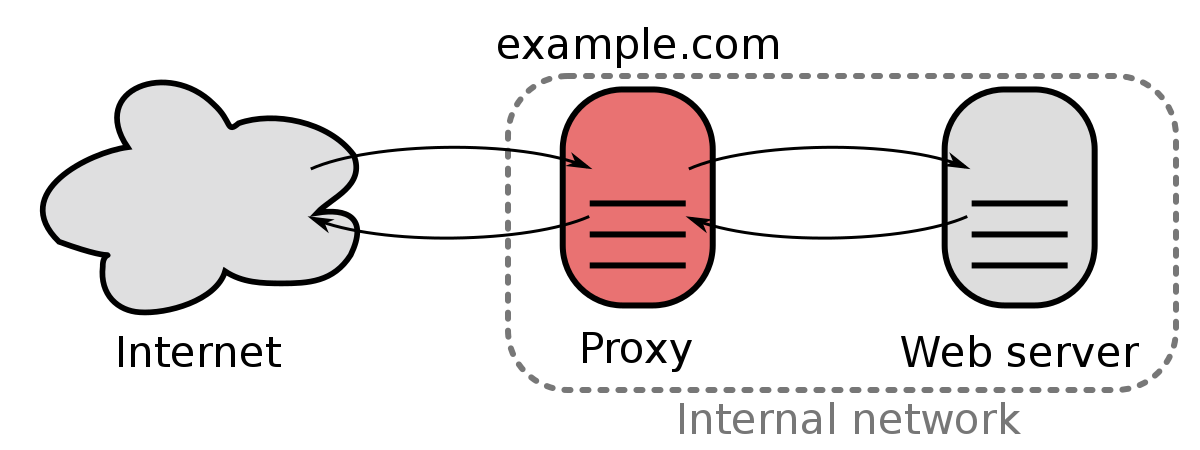- Published on
What is a Proxy? Reverse or Forward Proxy? Transparent? Load-balancing? Ahhhh!
- Authors

- Name
- Alex Lee
- @alexjoelee
The internet term conundrum continues! In today's post, I want to efficiently cover all of these terms and explain their importance and role in transporting data across the internet.
A proxy is a server or a software application that acts as an intermediary between a client and a server. This could be in either direction – for traffic coming inbound toward a web server, or for traffic leaving outbound from a corporate network.
A network proxy can serve many purposes, such as improving security by acting as a gateway between a user and the internet, or improving performance by caching frequently accessed resources.
- Forward proxy: This type of proxy is used by clients to access resources on the internet. The proxy server receives requests from clients and forwards them to the internet. Generally, this is used in corporate or enterprise environments – the proxy sits within the company network and filters outgoing web traffic.
- Reverse proxy: A reverse proxy is a server that sits between a web server and client requests. It receives requests from clients and forwards them to the appropriate server. Reverse proxies are often used to improve performance by caching frequently accessed resources and by load-balancing requests through a cluster of servers.
- Transparent proxy: A transparent proxy is a proxy that does not require any configuration on the client side. It intercepts all traffic without the client's knowledge and performs its functions automatically.
- Anonymous proxy: An anonymous proxy hides the client's IP address from the internet, making it difficult for websites to track the client's location or identity.
 Reverse Proxy Graphic from https://en.wikipedia.org/wiki/Reverse_proxy Beyond load-balancing and caching, which are essential for scalability and speed, proxies play a crucial role in security, a paramount concern for every business today. Reverse proxies, for example, can help protect web servers from Distributed Denial of Service (DDoS) attacks by filtering out malicious traffic. This is achieved by examining the client’s requests and ensuring they are legitimate before forwarding them to the web server, acting as a shield. Moreover, proxies can also enable SSL encryption for websites, adding an extra layer of security and ensuring data privacy.
Reverse Proxy Graphic from https://en.wikipedia.org/wiki/Reverse_proxy Beyond load-balancing and caching, which are essential for scalability and speed, proxies play a crucial role in security, a paramount concern for every business today. Reverse proxies, for example, can help protect web servers from Distributed Denial of Service (DDoS) attacks by filtering out malicious traffic. This is achieved by examining the client’s requests and ensuring they are legitimate before forwarding them to the web server, acting as a shield. Moreover, proxies can also enable SSL encryption for websites, adding an extra layer of security and ensuring data privacy.
Another important aspect that should not be overlooked is content filtering and compliance. Especially in corporate environments, forward proxies can be configured to block access to specific websites or content that may be inappropriate or unrelated to work. This not only helps in improving productivity but also ensures compliance with various regulations that might be in place. Additionally, by using anonymous proxies, businesses can also conduct competitive research and data mining without revealing their identity, gaining valuable market insights.
The versatile nature of proxy servers makes them an indispensable asset in today’s digital landscape. Here at Skip2 Networks, we understand that achieving a fast, scalable, and secure online presence is not just an option but a necessity. Our focus on implementing advanced reverse proxy systems is aimed at ensuring your web applications are not just meeting but exceeding performance benchmarks. By continually adapting and integrating the evolving capabilities of proxy technologies, we are committed to keeping your digital assets one step ahead, fortified and streamlined for the modern web.